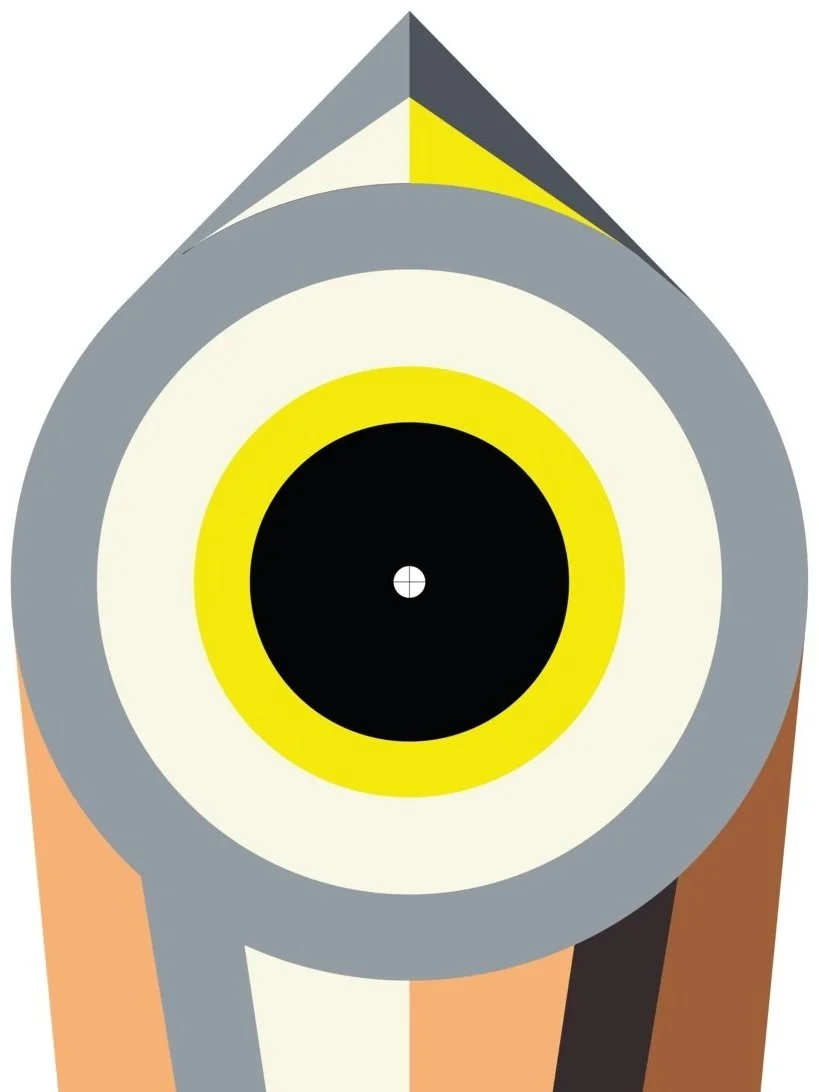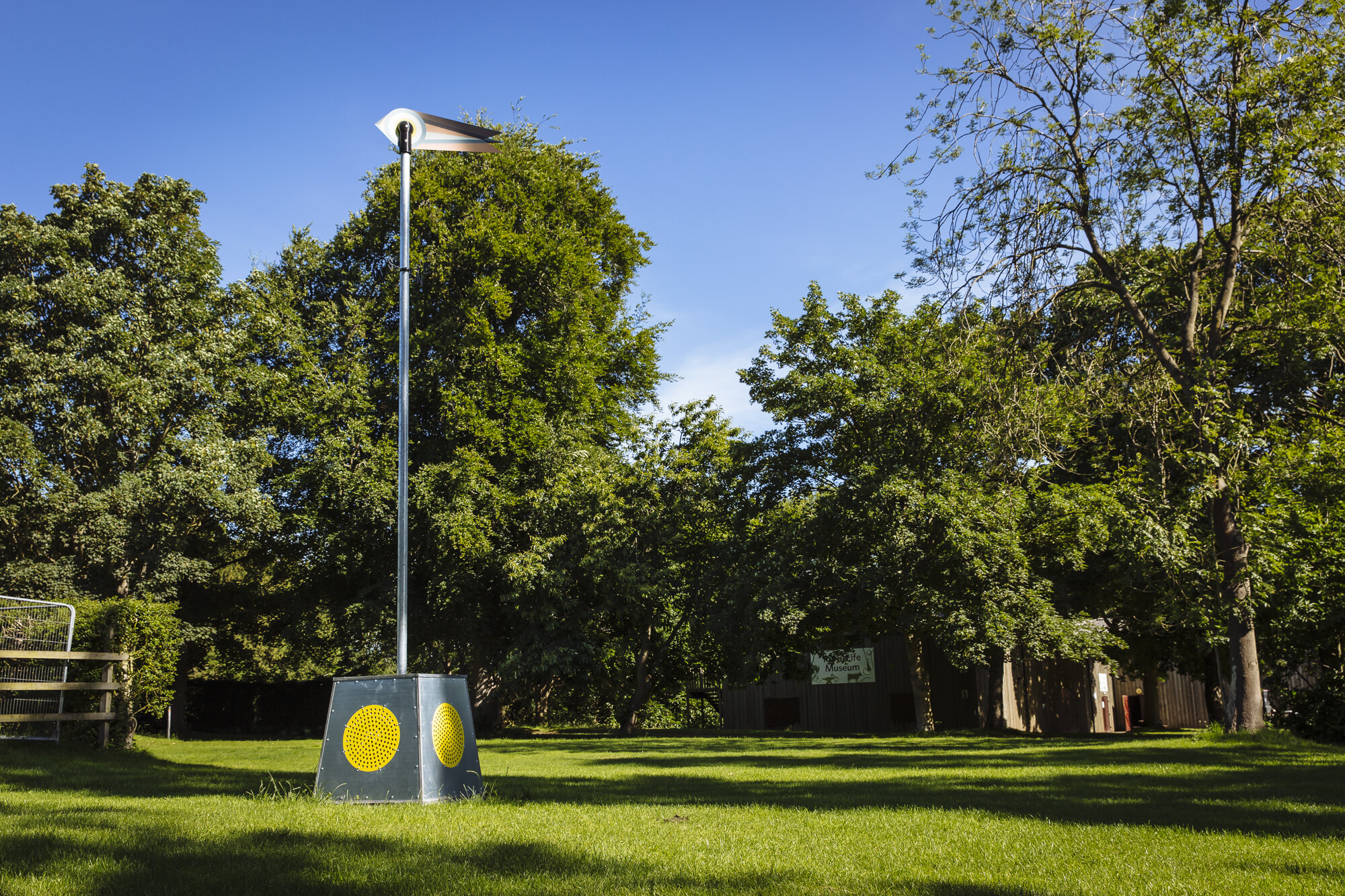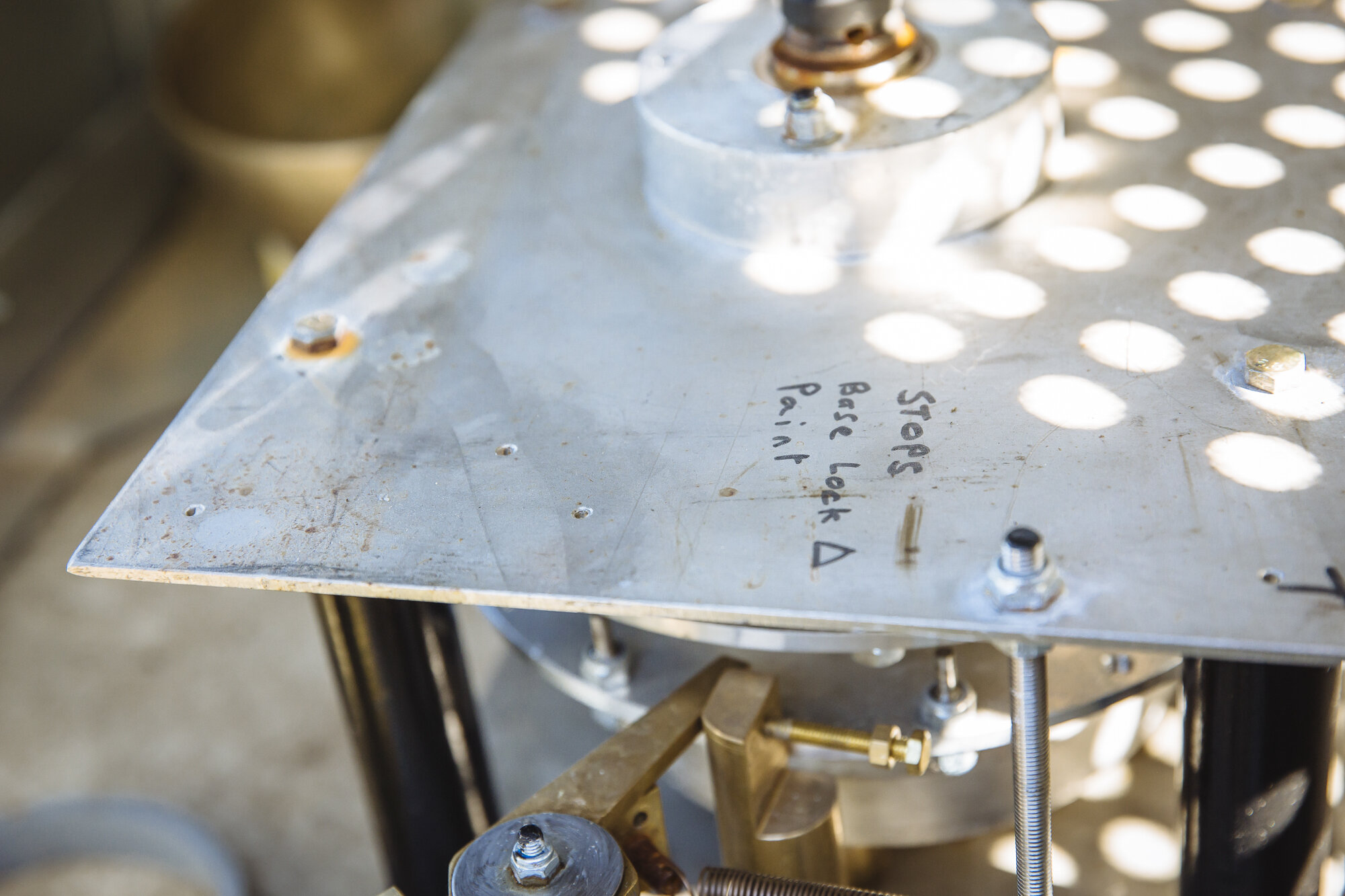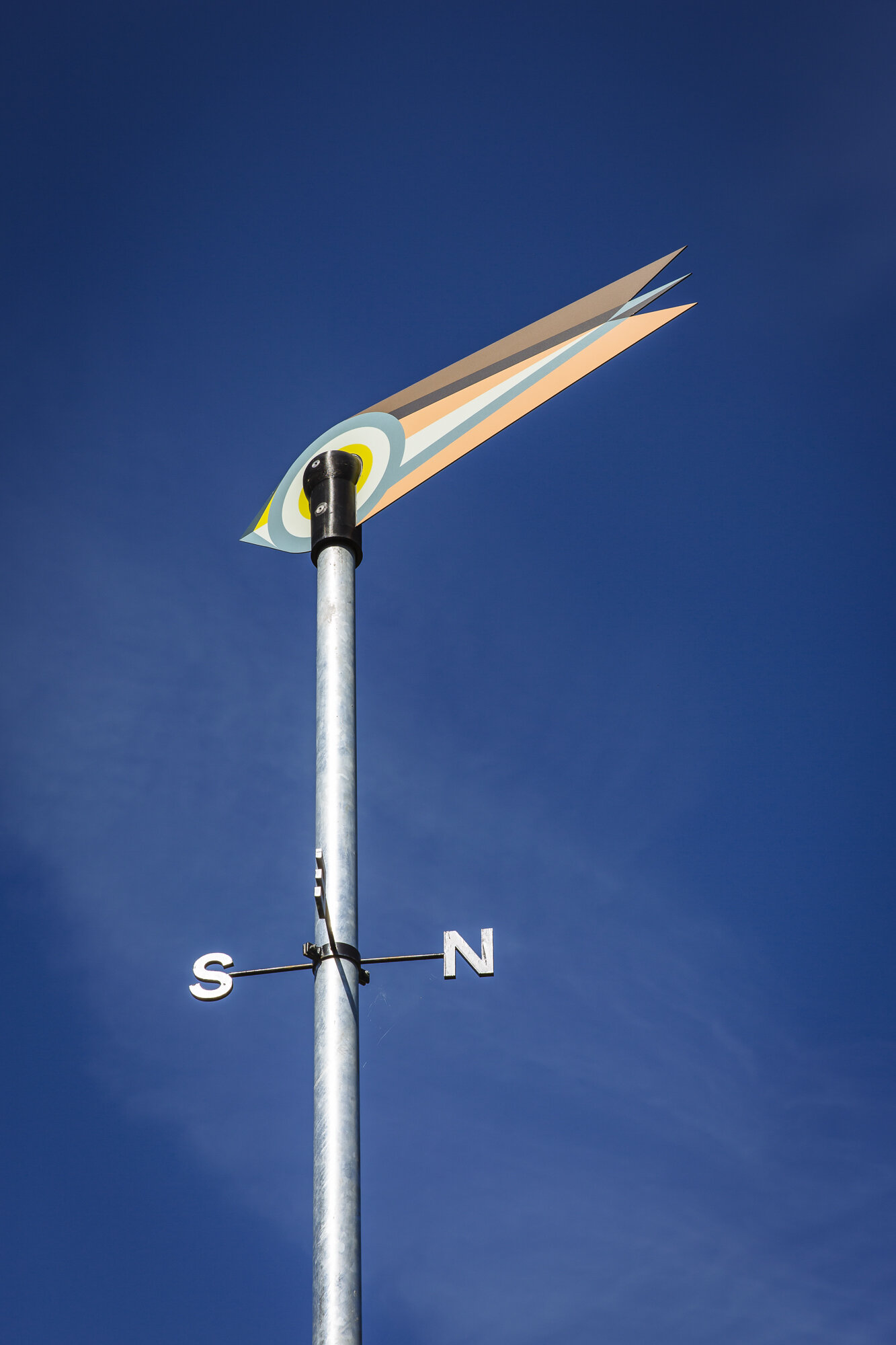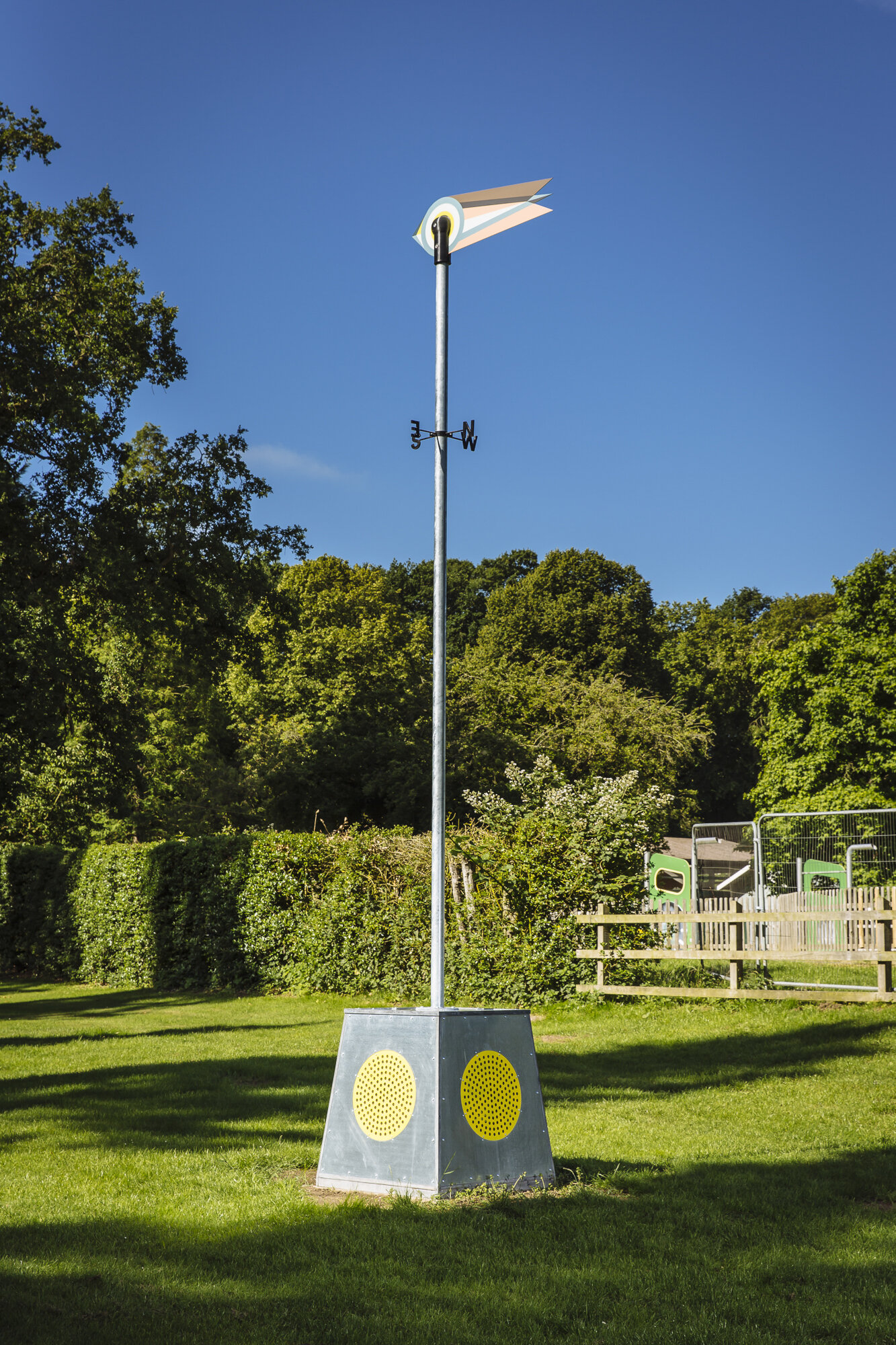Photos: James Mulkeen
Never Eat Soggy Wheat, 2020
Never Eat Soggy Wheat was inspired by Lincolnshire’s wildlife, agriculture, and a farmer's heightened awareness of wind and weather. The Wind Bell also draws from the collection at the Rural Life Museum, with its utilitarian machinery from 1850 to 1950 providing inspiration and reference points. The work explores the qualities of this machinery, re-appropriating its construction methods and materials, while proposing new ideas about what we can harvest from the grounds of Normanby Hall.
A farmer’s acute awareness of weather patterns and their impact on crop yields serves as one of the key catalysts for this piece. Their ability to read weather conditions stands in stark contrast to that of most people today. This is captured in a traditional Lincolnshire saying:
"It's looking rare and black o’wer Bill's mothers noo"
(Translation: It’s looking very grey and dark; bad weather is coming.)
The site-specific weather vane features a color-coded indicator, or sail, designed to catch winds from all directions and make them highly visible to visitors. It also functions as a navigational marker, using flashes of color and movement to highlight the location of the museum, visible from afar.
Hovering over farmland, kestrels have learned to watch mechanized farming operations, waiting for tractors to flush their prey from the crops. By controlling vole populations, they help farmers protect their crops and are widely regarded as a farmer’s ally. The sail of the proposed wind bell resembles a kestrel hovering in the breeze, with its colors borrowed as a nod to Lincolnshire farming. Additionally, the roundel feature pays tribute to Lincolnshire’s RAF heritage.
Hidden within the base unit are two Tibetan singing bowls, chosen for their resonance and volume. These unique sounds are intended to encourage visitors to make a mindful connection to the environment, ringing every time the wind shifts direction.
Location - Normanby Hall and Country Park, North Lincolnshire
Materials - Fabricated mild steel (galvanised), printed Dibond, 3D printed components, internal mechanism and 2 x seven metal singing bowls.
Height - 6 metres
